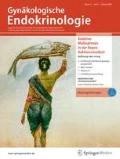Zusammenfassung
In den vergangenen Jahren sind immer mehr Hormonspeicheltests auf den Markt gekommen. Die Tests sind attraktiv, da Speichel nichtinvasiv und schnell vom Patienten selbst gewonnen und in ein Labor geschickt werden kann. Dennoch bleiben Hormontests auf wenige konkrete Indikationen beschränkt. Die bunten Angebotspaletten zur Abklärung verschiedenster Krankheits- oder Gemütszustände sind nicht indiziert. Der vorliegende Beitrag stellt die Thematik kritisch dar und konzentriert sich hierbei auf die Bestimmung von Steroidhormonen. Zunächst wird beschrieben, wie Hormone in den Speichel gelangen. Dann wird erläutert, wie sich Speichelgewinnung und Präanalytik auf die Messung auswirken. Zahlreiche Faktoren beeinflussen auch die Analytik: Besprochen werden unter anderem Kreuzreaktionen mit strukturähnlichen Hormonen oder Metaboliten und die Bindung von Steroiden an Transportproteine. Es folgt eine Gegenüberstellung von aktuell angewandten analytischen Verfahren, zum einen Immunassays, zum anderen die Massenspektrometrie. Zuletzt wird auf die wenigen etablierten Indikationen der Speicheltests eingegangen.
Abstract
Increasingly more salivary hormone tests have become available on the market over the years. The tests are attractive because saliva can be obtained non-invasively and rapidly by patients themselves and sent for laboratory testing; nevertheless, hormone tests are limited to only a few established indications. The wide range of products available for clarification of extremely different disease and emotional states are not scientifically indicated. This article presents a critical appraisal of the topic and concentrates on the determination of steroid hormones. Firstly, a description is given of why hormones are present in saliva, followed by an explanation of how saliva sampling and preanalytical conditions can influence the measurement results. Many factors also influence the analytical results, whereby cross-reactions with hormones and metabolites with similar structures and binding of steroids to transport proteins are discussed. A comparison of the currently used analytical procedures is presented, including immunoassays and mass spectrometry. Finally, the few established indications for saliva tests are presented.




Literatur
Bae YJ, Kratzsch J (2015) Corticosteroid-binding globulin: Modulating mechanisms of bioavailability of cortisol and its clinical implications. Best Pract Res Clin Endocrinol Metab 29:761–762
Baecher S, Azad SC, Vogeser M (2013) Inter-method comparison of salivary cortisol measurement. J Lab Med 37:269–273
Celec P, Ostatníková D (2012) Saliva collection devices affect sex steroid concentrations. Clin Chim Acta 413:1625–1628
Deutschbein T, Petersenn S (2013) Screening for Cushing’s syndrome: new immunoassays require adequate normative data. Horm Metab Res 45:118–123
Durdiaková J, Fábryová H, Koborová I et al (2013) The effects of saliva collection, handling and storage on salivary testosterone measurement. Steroids 78:1325–1331
Gaudl A, Kratzsch J, Bae YJ et al (2016) Liquid chromatography quadrupole linear ion trap mass spectrometry for quantitative steroid hormone analysis in plasma, urine, saliva and hair. J Chromatogr A 1464:64–71
Huhtaniemi IT, Tajar A, Lee DM et al (2012) Comparison of serum testosterone and estradiol measurements in 3174 European men using platform immunoassay and mass spectrometry; relevance for the diagnostics in aging men. Eur J Endocrinol 166:983–991
Inder WJ, Dimeski G, Russell A (2012) Measurement of salivary cortisol in 2012 – laboratory techniques and clinical indications. Clin Endocrinol (Oxf) 77:645–651
Merlot J (2013) Ärzte warnen vor Speicheltest auf Hormone. Spiegel Online, Hamburg
Middle JG (2007) Dehydroepiandrostenedione sulphate interferes in many direct immunoassays for testosterone. Ann Clin Biochem 44:173–177
Pfaffe T, Cooper-White J, Beyerlein P et al (2011) Diagnostic potential of saliva: current state and future applications. Clin Chem 57:675–687
Rosner W, Hankinson SE, Sluss PM et al (2013) Challenges to the measurement of estradiol: an endocrine society position statement. J Clin Endocrinol Metab 98:1376–1387
Schultheiss OC (2013) Effects of sugarless chewing gum as a stimulant on progesterone, cortisol, and testosterone concentrations assessed in saliva. Int J Psychophysiol 87:111–114
Taylor AE, Keevil B, Huhtaniemi IT (2015) Mass spectrometry and immunoassay: how to measure steroid hormones today and tomorrow. Eur J Endocrinol 173:D1–D12
Thaler MA, Seifert-Klauss VS-K, Luppa PB (2015) The biomarker sex hormone-binding globulin – From established applications to emerging trends in clinical medicine. Best Pract Res Clin Endocrinol Metab 29:749–760
Vialard-Miguel J, Belaïdi N, Lembeye L, Corcuff J‑B (2005) Lemon juice alters cortisol assays in saliva. Clin Endocrinol (Oxf) 63:478–479
Wood P (2009) Salivary steroid assays – research or routine? Ann Clin Biochem 46:183–196
Author information
Authors and Affiliations
Corresponding author
Ethics declarations
Interessenkonflikt
G.M. Fiedler gibt an, dass kein Interessenkonflikt besteht.
Dieser Beitrag beinhaltet keine vom Autor durchgeführten Studien an Menschen oder Tieren.
Additional information
Redaktion
L. Kiesel, Münster
A.O. Mueck, Tübingen
P. Stute, Bern
Rights and permissions
About this article
Cite this article
Fiedler, G.M. Sinn und Unsinn von Speicheltests auf Hormone. Gynäkologische Endokrinologie 15, 171–175 (2017). https://doi.org/10.1007/s10304-017-0124-4
Published:
Issue Date:
DOI: https://doi.org/10.1007/s10304-017-0124-4
Schlüsselwörter
- Immunassays
- Gaschromatographie
- Flüssigkeitschromatographie
- Massenspektrometrie
- Kortisol
- Hormonspeicheltest

